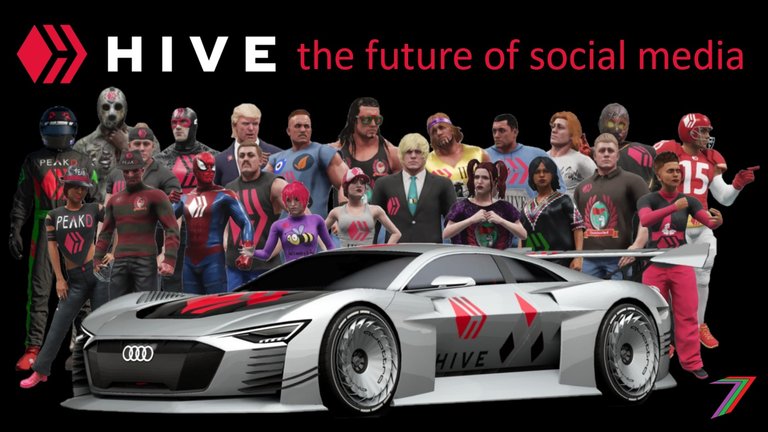Hi Everyone,

Earlier this year, I put together a short series of posts about ‘The Great Reset’. In this series, I focused on the Klaus Schwab book ‘Covid-19: The Great Reset’. The book is important as it sets the tone for many proposed initiatives by the World Economic Forum. The World Economic Forum has become the hub for information about the Great Reset and the Fourth Industrial Revolution, which is based off another book also authored by Klaus Schwab. The Fourth Industrial Revolution is an important precursor to the Great Reset. Much of what is described as part of the Fourth Industrial Revolution is being recommended as part of the Great Reset. In this post, I broadly explore the Fourth Industrial Revolution based on key areas described on the World Economic Forum website. An outline can be very revealing about the direction and emphasis of content and future proposals.
An overview of the Fourth Industrial Revolution
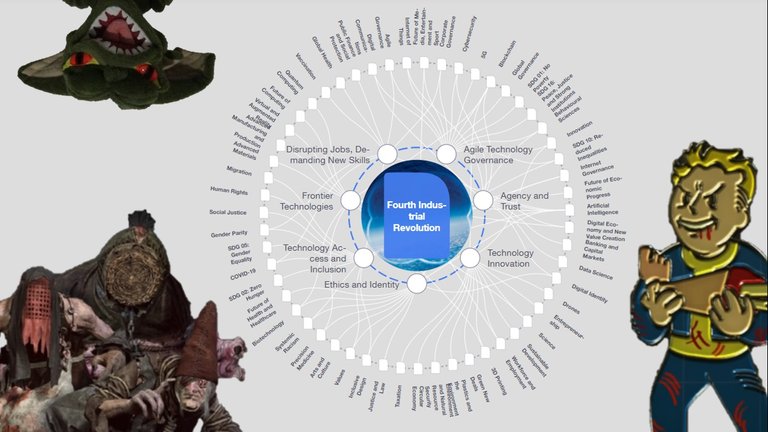
The World Economic Forum website has many articles about many aspects of the Fourth Industrial Revolution. They add several new articles every week. Exploring all the articles from just this year would take many hours. I would suggest reading the articles that standout or relate to an area that you are particularly interested in. For example, there is an interesting new article about blockchain technologies. The article discusses several potential advantages to financial sectors. However, the article leans towards centralised application and governance of blockchains rather allowing or enabling decentralisation (i.e. most important feature). Centralisation is one of the reoccurring themes for the Great Reset and the Fourth Industrial Revolution; this becomes apparent even from just a brief overview of the main aspects of the Fourth Industrial Revolution. The World Economic Forum presents an overview of the Fourth Industrial Revolution in a wheel. I have captured this wheel as a GIF in Figure 1 below.
Figure 1: Overview of the Fourth Industrial Revolution

Source: World Economic Forum
As can be seen from the wheel, the Fourth Industrial Revolution comprises of many different areas. These areas are as follows.
- Frontier technologies
- Ethics and identity
- Agile technology governance
- Agency and trust
- Disrupting jobs, demanding new skills
- Technology access and inclusion
- Technology innovation
The titles given to these areas are important as they imply the general direction that proposals are likely take. Words such as ethics, identity, governance, trust, and inclusion are sprinkled in these titles. These words indicate a focus on equality or possibly fairness. For example, under ‘Ethics and Identity’, there are subcategories such as ‘Systemic Racism’, ‘Inclusive Design’, ‘Future of Media Entertainment and Sports’, and ‘Digital Identity’. If we inspect the subcategories, they feed back to the same themes such as trust and inclusion. Below are the wheels for Systemic Racism, Future of Media Entertainment and Sports, and Digital Identity.

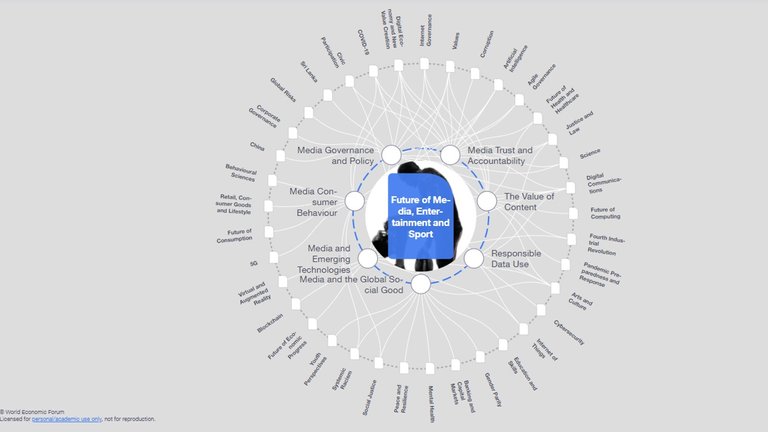
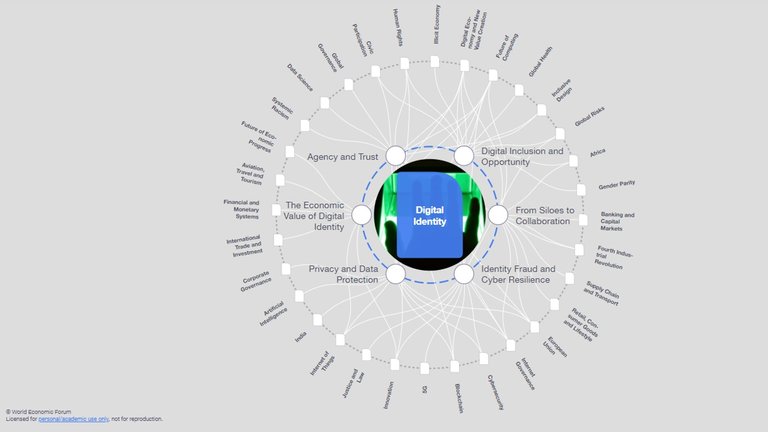
We could also take a look at Frontier Technologies, which has subcategories such as ‘Artificial Intelligence, ‘3D Printing’, ‘Digital Economy’, and ‘Blockchain’. These categories appear to form a logical progression from the Frontier Technologies category. However, if we click on each subcategory we return to similar themes such as governance and identity. For example, ‘Blockchain’ has the subcategories of ‘Policy, Regulation and Law’, and ‘Climate Impact, which highlights a heavy centralised governance approach. Even the category of ‘Decentralised Governance and New Models’ links to ‘Global Governance’, ‘Corporate Governance’, and ‘Internet Governance’. See the wheels below for blockchain.
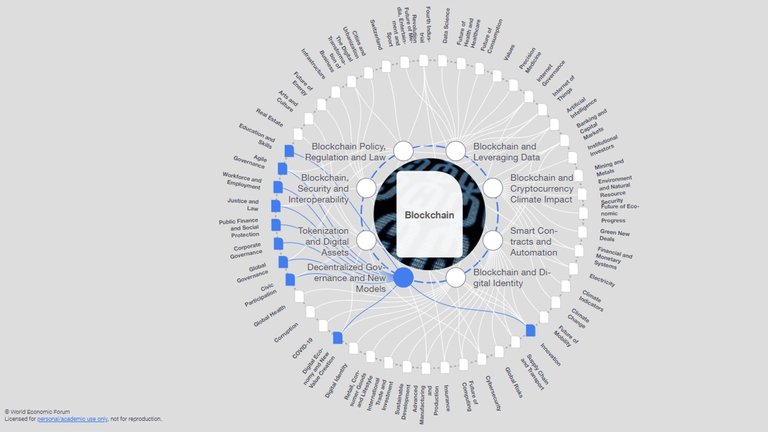
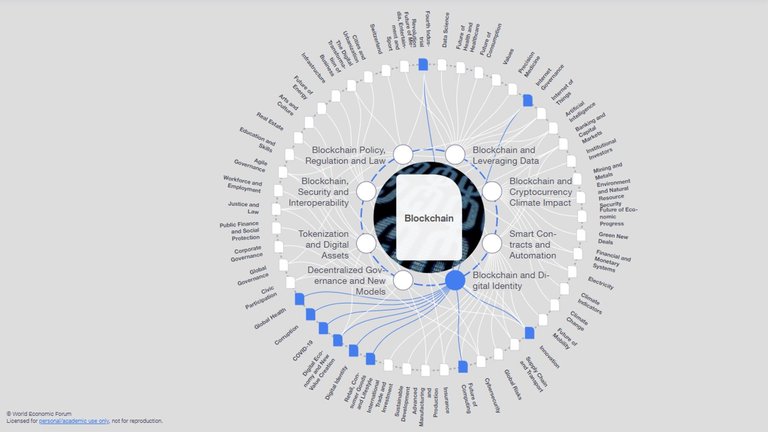
Under the subcategory of ‘Blockchain’, is ‘Digital Identity’. Blockchains have the capability of protecting identity. However, the focus appears the opposite. Digital identity links to areas such as ‘Covid-19’, ‘Global Health’, ‘Internet Governance’, and ‘Corruption’ with no mention of anonymity. ‘Digital identity’ links to another ‘Digital Identity’ subcategory, which provides more detail. See below.
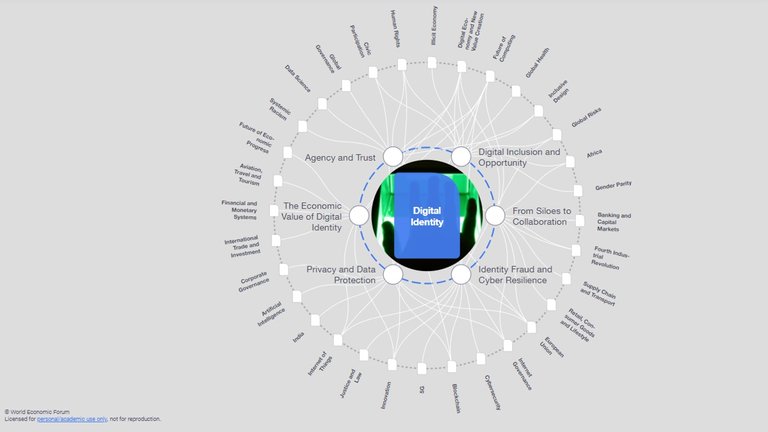
As can be seen from the wheel, 'Digital Identity' links back to common themes such as agency and trust, and inclusion.
Covid-19 and the Fourth Industrial Revolution
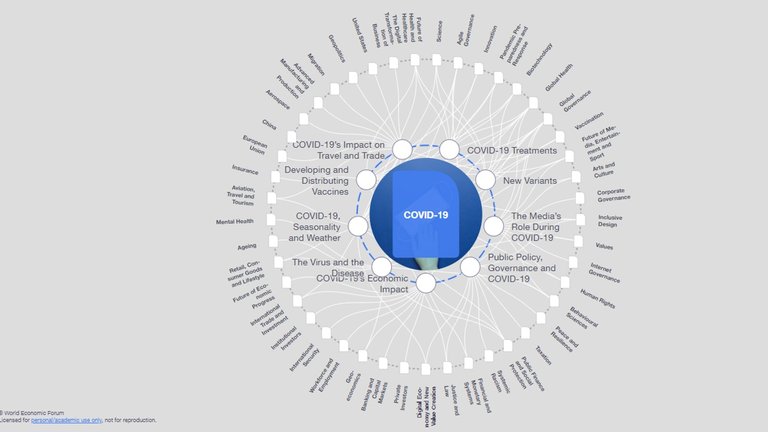
Covid-19 has been used as the catalyst to fast track many aspects of the Fourth Industrial Revolution as part of the Great Reset. Therefore, it is not surprising that Covid-19 has been incorporated into the wheel. If we click on Covid-19, the wheel reveals how Covid-19 fits into the Fourth Industrial Revolution. See Figure 2 below.
Figure 2: Covid-19 as part of the Fourth Industrial Revolution
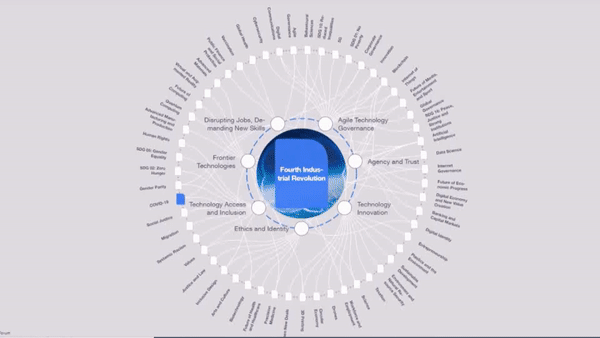
Source: World Economic Forum
The wheel breaks down Covid-19 into nine different areas. These areas are as follows:
- Impact on travel and trade
- Treatments
- New variants
- Media’s role
- Public policy and governance
- Economic impact
- The virus and the disease
- Covid-19 seasonality and weather
- Developing and distributing vaccines
It is intriguing that ‘prevention’, ‘information’, and ‘responses’ are not included in these areas. Instead, the headings appear to assume that vaccines will prevent, media will inform, and government will respond. These headings also presume that other methods of preventing, informing and responding are not worthy of discussion. Below is the vaccination wheel.

The wheel contains subcategories with key words such as trust, misinformation, hesitancy, and security. This illustrates that the World Economic Forum have determined that vaccination is the necessary step forward and people need to trust what they say is correct. In other words, the message is to trust a centralised source of information rather than question the information and source or investigate further. Ironically, or maybe not so, the new mRNA vaccines are “programming” our bodies to respond to Covid-19 in a predetermined way, which is being authorised by centralised authorities.
Governance
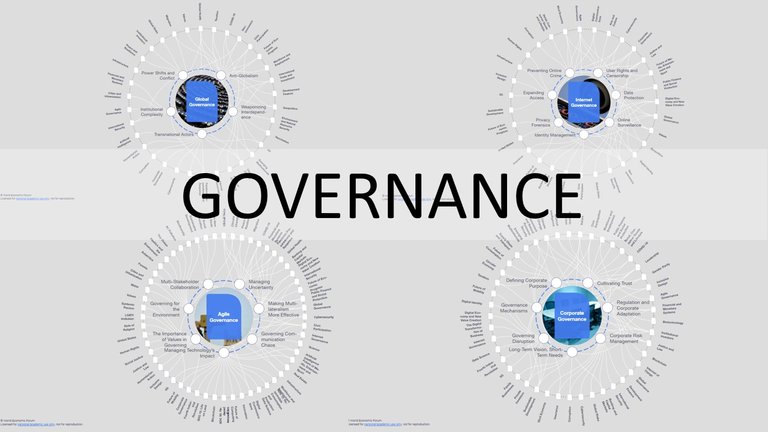
A key part of the Great Reset is governance. In my Great Reset series, I came to the conclusion that the Great Reset was heavily focused on centralised governance. From just a brief overview of the key areas of the Fourth Industrial Revolution, it is clear that centralised governance is a key focus. Four types of governance are reoccurring themes in the overview. They are global governance, internet governance, agile governance, corporate governance. There is no mention of decentralised governance.
Global Governance
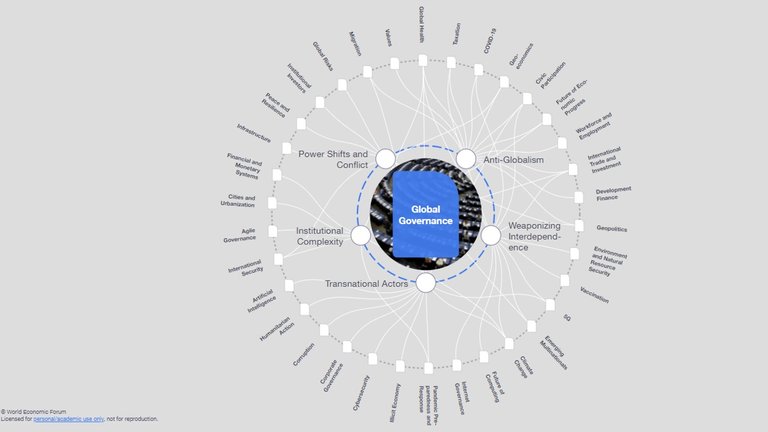
It appears globalisation has been assumed desirable and any opposition to globalisation appears to be treated as undesirable. There is even a subcategory ‘Anti-Globalisation’. It appears the Fourth Industrial Revolution aims at treating many or even most problems, goals, objectives, and outcomes as global. Essentially, this implies a top-down approach that can be applied to and/or adapted for every country. Explore the wheel to view the many areas expected to face some form of global governance.
Internet Governance
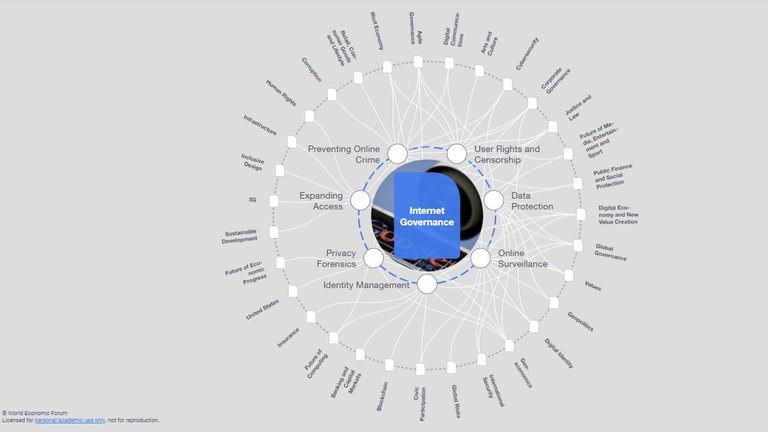
The internet governance wheel is interesting and quite revealing. There are subcategories such as ‘User Rights and Censorship’, ‘Online Surveillance’, and ‘Identity Management’. Unfortunately, none of these subcategories link to ‘freedom’ or ‘freedom of speech’. Instead, these subcategories link to topics such as ‘Cybersecurity’, ‘Justice and Law’, ‘Global Risks’, ‘Values’, and ‘Global Governance’. The subcategory ‘Expanding Access’, could have referred to freedom but instead focused on technology.
Agile Governance

The category title implies flexibility in governance, which could imply scope for a less dictatorial approach. For example the subcategory, ‘Multi-stakeholder Collaboration’. However, it links back into ‘Global Governance’ and an implied top-down organisation of different stakeholders. The importance of values is included as a subcategory. It focuses on inclusiveness and feeds back into ‘Global Governance’. Terms such as decentralisation or democratic do not appear in the wheel for ‘Agile Governance’. Instead, very specific areas such as ‘Green New Deal’ and ‘LGBTI Inclusion’ are included in the wheel. ‘Blockchain’ appears in the wheel but as technology to be managed rather than a tool to enhance ‘Agile Governance’.
Corporate Governance

For Corporate Governance, Key words such as trust and regulation are used in the subcategories. Subcategory ‘Cultivating Trust’ links to areas such as ‘Gender Equality’, ‘Systemic Racism’, ‘Covid-19’, ‘Climate Change’, ‘Civic Participation’, and ‘Inclusive Design’. Areas such as quality control, externalities, efficiency, accountability, and ethical conduct are not included. The areas highlighted in the wheel are mostly possible examples rather than broader areas. The use of broader areas would have been more practical, as examples are likely to change or evolve over time. Subcategory ‘Corporate Regulation and Adaption’ links to areas such as ‘Financial and Monetary Systems’, ‘Blockchain’, ‘Global Governance’, and ‘Justice and Law’. Blockchain appears in several areas. It is treated as something that needs or requires external regulation. If it is decentralised, blockchains do not require regulation, as individuals or small groups of people cannot control it. However, regulations are determined and controlled by the few; thus, are more susceptible to corruption.
Family Business
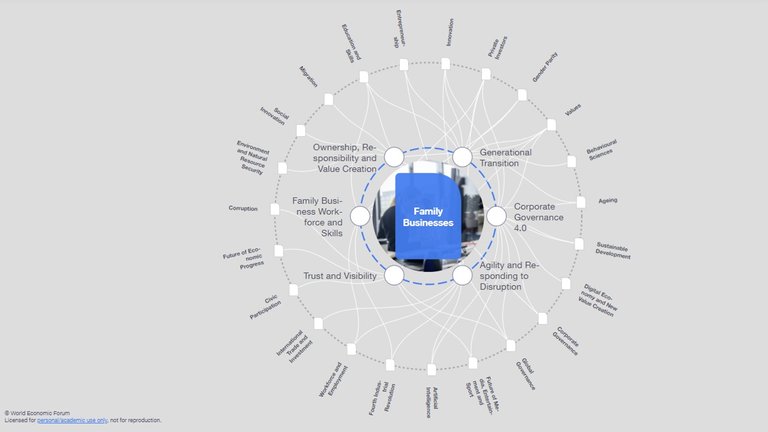
An area/category in the wheel that caught my curiosity was ‘Family Business’. In many countries, small business have been devastated by Covid-19 restrictions. Many small businesses have failed and others have barely survived on handouts from Governments. How does the Fourth Industrial Revolution relate to small businesses (e.g. family businesses)?
Yet again, governance and trust are considered as key areas. Subcategories such as ‘Ownership Responsibility and Value Creation’ and ‘Corporate Governance 4.0’ both feed into 'Corporate Governance' and 'Global Governance'. The subcategory ‘Trust and Visibility’ also feeds into 'Global Governance'. This wheel strongly implies the Fourth Industrial Revolution will pursue external governance and regulation of small businesses.
Human Rights
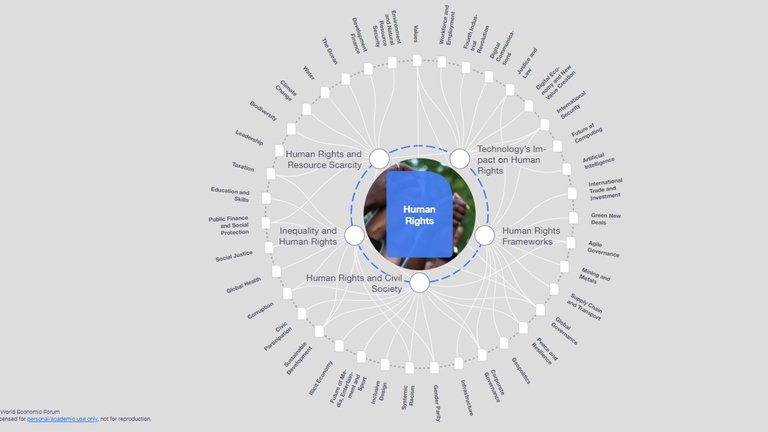
Another area that intrigued me was how the Fourth Industrial Revolution considered ‘Human Rights’. Human rights was broken down into five subcategories. These subcategories are as follows:
- Resource Scarcity
- Impact of technology
- Human right’s frameworks
- Civil society
- Inequality
Four of those five subcategories link to ‘Global Governance’ and three of the five link to ‘Corporate Governance’. The strong emphasis on top-down governance on human rights is alarming. The idea that global elites should dictate human rights should be very concerning to everyone. Freedom is arguably the most important human right; however, freedom does not appear as a subcategory or anywhere else on the human rights wheel. Taxation is linked to subcategories ‘Resource Scarcity’ and ‘Inequality’ but there is no reference to opportunities. The Fourth Industrial Revolution’s apparent approach to human rights is deeply concerning.
Climate Change
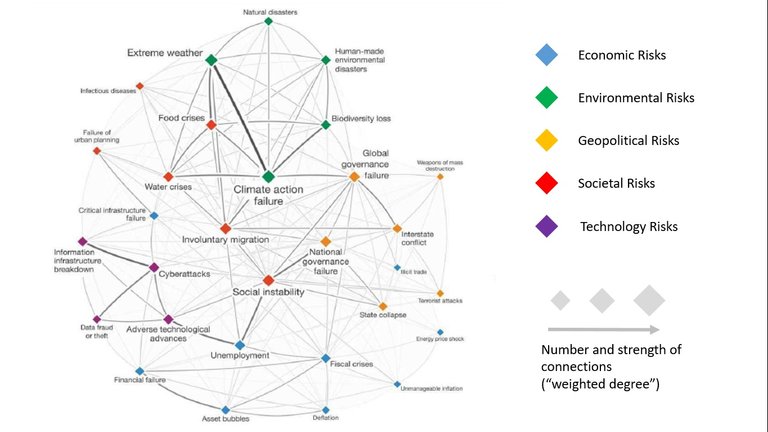
Climate change is a key focus of the Great Reset. However, climate change is not included as one of the main subcategories under the main Fourth Industrial Revolution wheel. Climate change can be found a little deeper and is woven into several other subcategories. I would argue climate change should be considered under the subcategory of environment, which I could not find.
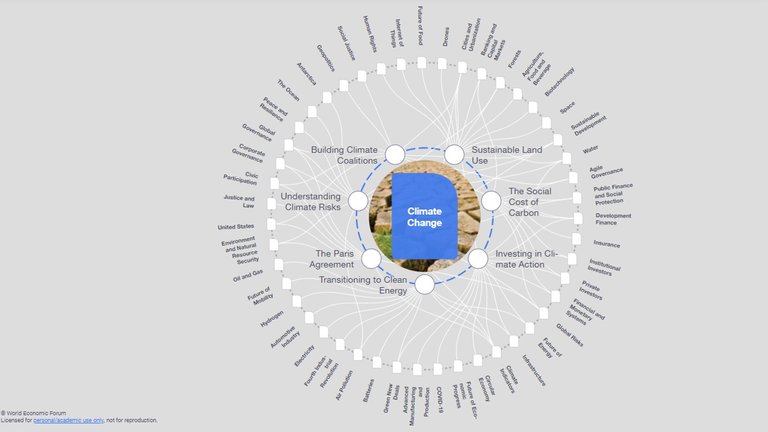
The wheel for climate change is quite large; it consists of seven subcategories. These subcategories are as follows:
- Building climate coalitions
- Sustainable land use
- The social cost of carbon
- Investing in climate action
- Transitioning to clean energy
- The Paris Agreement
- Understanding climate risks
The subcategories are inconsistent. ‘Sustainable Land Use’ and ‘Transitioning to Clean Energy’ should be considered as subcategories to environment as they have significantly broader scope than climate change. Whereas, subcategories such as ‘Building Climate Coalitions’ and ‘The Paris Agreement’ are specific actions and should be considered as possible approaches and not subcategories. The subcategory ‘Social Cost of Carbon’ is the identification of one possible problem (impact). It should be placed under a broader subcategory such as air pollution. The subcategory ‘Understanding Climate Risks’ is logical but it does not distinguish between threats and opportunities created by climate change; the wheel indicates the negative aspects.
The biggest and most glaring omission from the climate change wheel is 'adaption'. Adaption is how every species throughout history has responded to climate change. Species that have failed to do so have become extinct. We should attempt to understand how climate change would affect our environment and possibly our lives. We should determine what the positive and negative impacts are likely to be for different places. This would likely be a decentralised approach, as different places will be affected differently. Therefore, decisions would be made on local levels and not global levels. We should then decide how we should adapt to avoid the negative impacts while benefiting from the positive impacts. Unfortunately, the climate change section of the Fourth Industrial Revolution appears to omit this possible course of action completely.
Conclusion
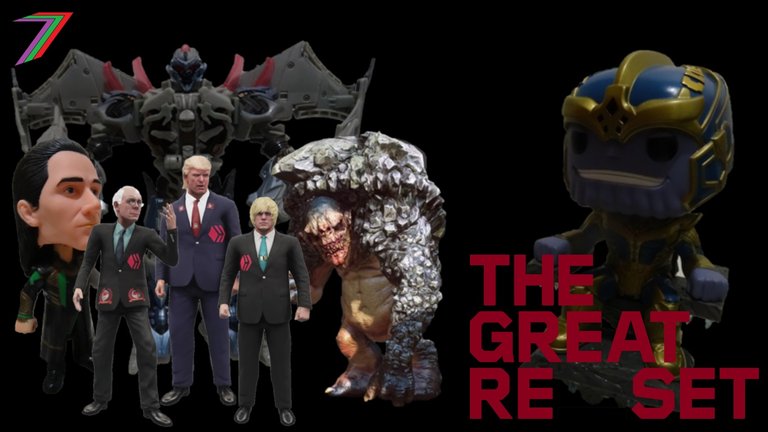
The Great Reset and the Fourth Industrial Revolution are still in the early days of implementation. There is a lot we do not know about the plans that lay ahead. However, the World Economic Forum offers a window into these plans with the information wheels they have on their website. The wheels display the links and the progression of ideas. They display the areas considered sufficiently important to be given their own title/heading/subcategory. From this information, we can gauge the general direction and emphasis of the Great Reset.
I expressed strong concerns about the Great Reset based on the content expressed in the book ‘Covid-19: The Great Reset’. The information presented on the World Economic Forum website has reinforced these concerns. The Great Reset appears to be taking us down the path of centralised governance and control. Many of the goals and objectives of the Great Reset/Fourth Industrial Revolution appear to be aimed at reducing freedom and individuality. Instead, the aim appears to promote equality, through compliance to rules, regulations and laws rather than opportunity through choice. It looks like a form of enforced global socialism that could easily morph into totalitarianism. In my post, Is Socialism being used as a path to Fascism?, I discuss how socialist ideas could be a path towards fascism. The Great Reset and Fourth Industrial Revolution could be the foundation of that path.
More posts
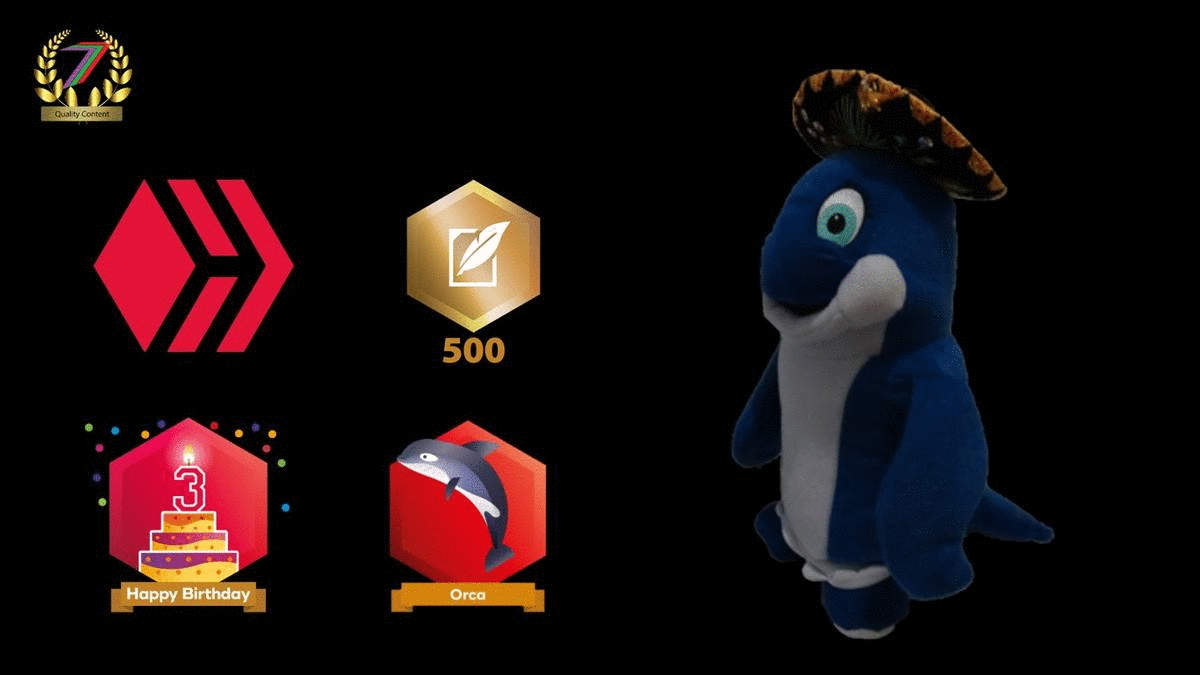
If you want to read any of my other posts, you can click on the links below. These links will lead you to posts containing my collection of works. These 'Collection of Works' posts have been updated to contain links to the Hive versions of my posts.
My New CBA Udemy Course
The course contains over 10 hours of video, over 60 downloadable resources, over 40 multiple-choice questions, 2 sample case studies, 1 practice CBA, life time access and a certificate on completion. The course is priced at the Tier 1 price of £20. I believe it is frequently available at half-price.
Future of Social Media
